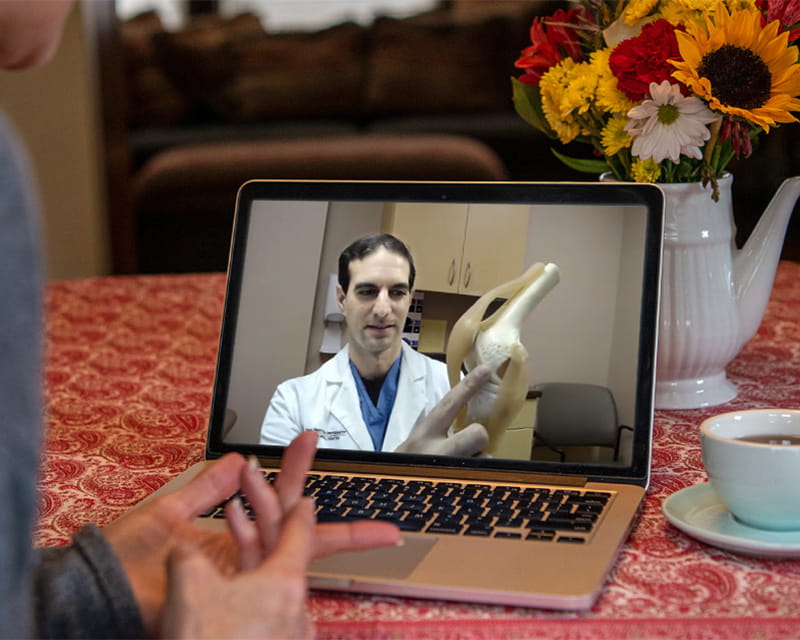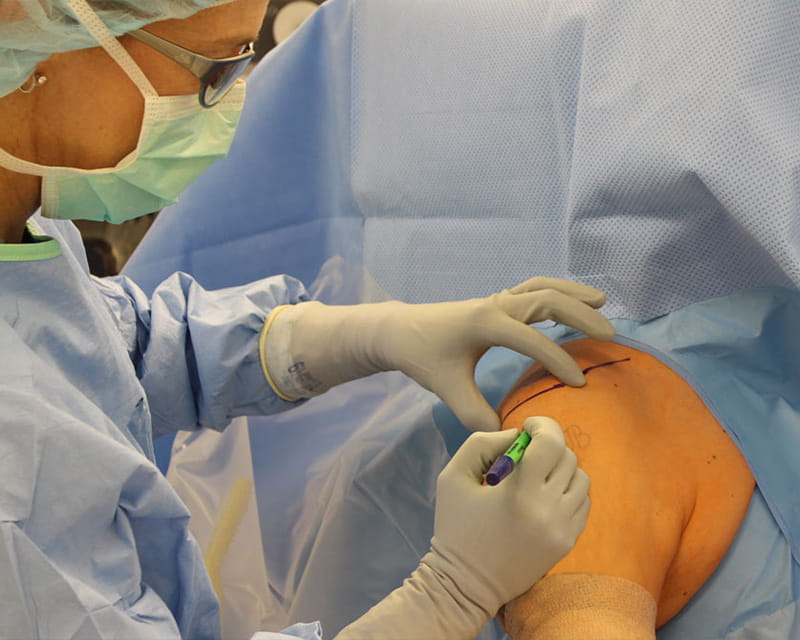
IMPROVING PATIENT CARE
 To perform an anatomical total shoulder replacement, a surgeon must cut the subscapularis (the front rotator cuff tendon) to get into the shoulder joint. One of the challenges of this surgery is the risk that the tendon may not heal properly afterward, which could result in the humeral head (the ball) popping out of the glenoid (the socket). Past research has compared different surgical techniques, with no clear winner.
To perform an anatomical total shoulder replacement, a surgeon must cut the subscapularis (the front rotator cuff tendon) to get into the shoulder joint. One of the challenges of this surgery is the risk that the tendon may not heal properly afterward, which could result in the humeral head (the ball) popping out of the glenoid (the socket). Past research has compared different surgical techniques, with no clear winner.
A team at The Ohio State University Wexner Medical Center is taking on this challenge in a new way, using the Regeneten patch, a bioinductive implant made of type 1 collagen. A clinical trial funded by Smith and Nephew, the makers of the Regeneten patch, is comparing the outcomes of shoulder replacement using the patch and shoulder replacement without it. The trial is actively recruiting and available only at the Ohio State Wexner Medical Center.
“We came up with the idea and proposed it to Smith and Nephew, and we are the only site that is doing it,” says Julie Bishop, MD, an orthopedic surgeon and one of the co-investigators on the study. The rest of the team includes Gregory Cvetanovich, MD, and Andrew Neviaser, MD.
“Others have looked at different ways of cutting the subscapularis and repairing it, to see if that would improve healing,” Dr. Bishop says. “There have been papers that have looked at doing a tenotomy, which is just cutting it, versus peeling it in its entirety off the bone, versus actually taking the subscapularis with a little fleck of bone, a lesser tuberosity osteotomy. But past research hasn't been able to show that one way definitely works better than another.
“Now that we’re in this world of biologics, we thought, ‘What if we reinforced our repair with this Regeneten patch, and maybe we could determine whether it did improve the healing and the integrity of the subscapularis?’”
The team did a power analysis and plans to enroll 50 patients in each arm of the study. The trial is recruiting now. The patients will be randomized to receive the Regeneten implant or not. The patients will not be told until the one-year mark which arm of the study they were in.
“We follow their range of motion and strength through the year,” Dr. Bishop explains. “Then, at the one-year mark, we’ll do ultrasounds of every patient’s subscapularis and we’ll do clinical testing comparing range of motion, strength and pain levels to see whether the clinical outcomes are better in the group receiving the patch.”
Patients who are not eligible include those who need a reverse total shoulder replacement or those who have had any prior open shoulder surgery involving cutting or otherwise violating the subscapularis.
If the Regeneten implant could help improve healing of the subscapularis, it might improve overall outcomes for many patients, and help prevent the need for further surgery.
“This trial will show us whether this innovation, the patch, could help us solve what has been a complicated and tough problem,” Dr. Bishop says. “If your subscapularis fails, your shoulder replacement fails. So we're really trying to determine if the patch could give us—and these patients—better outcomes.”